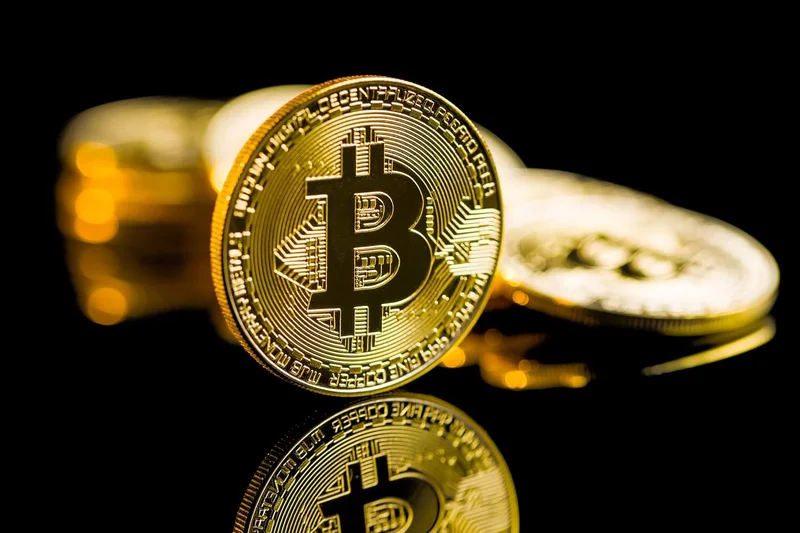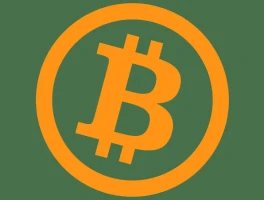The Great Translation: How Wall Street Finally Learned to Speak Bitcoin
---
I’ve spent my career at the edge of what’s next, from the labs at MIT to the front lines of the digital revolution. And in all that time, I’ve learned to recognize the sound of a paradigm shifting. It isn't a loud crash; it’s a quiet click. It’s the sound of a key turning in a lock that no one thought could be opened. This week, we didn't just hear that click—we heard the thunderous sound of the vault door swinging wide open.
For years, the worlds of traditional finance and decentralized digital assets have spoken different languages. Wall Street spoke in terms of ETFs, indices, and regulatory compliance. Crypto spoke in hashes, nodes, and private keys. They were two continents separated by a vast, turbulent ocean of misunderstanding and risk. We saw brave explorers make the journey, but the continents themselves remained apart.
Until now. What we're witnessing isn't just another bull run in the bitcoin price; it's something far more profound. We are living through the Great Translation, the moment when the world’s largest financial institutions finally built the Rosetta Stone needed to understand—and embrace—this new economic language.
When I saw the numbers from BlackRock’s iShares Bitcoin Trust (IBIT), I honestly just sat back in my chair, speechless. This is the kind of breakthrough that reminds me why I got into this field in the first place. In just 21 months, a Bitcoin ETF has become the single most profitable fund for the largest asset manager on Earth, a $12 trillion behemoth. The sheer velocity of this adoption is mind-bending—we're talking about a 21-month-old fund out-earning behemoths that have been pillars of the financial world for a quarter of a century, and it shows the monumental, pent-up demand that was just waiting for a familiar key to unlock the door.
Larry Fink, BlackRock’s CEO, said it himself: “I became a believer.” This isn’t some speculative gamble. It’s a fundamental recognition that in a world of debasing currencies, a new kind of digital gold has emerged. The ETF isn't the asset; it's the translator. It takes the complex, native reality of Bitcoin mining and self-custody and translates it into a language every investor already understands: a ticker symbol.

The Infrastructure of Belief
This isn't just a story about one fund or one asset. That would be missing the forest for the trees. The Great Translation is happening at every level of the financial system, laying down the highways and bridges for a new kind of economy. Look no further than S&P Global, the institution that literally defines the market for millions, launching its "Digital Markets 50" index.
This is a hybrid benchmark—in simpler terms, think of it as a single, easy-to-read stock ticker for the entire digital asset revolution, blending the picks and shovels with the gold itself. It combines 35 blockchain-related public companies with 15 major cryptocurrencies like Ethereum and Solana. This is institutional-grade infrastructure. It’s S&P telling the world, "This is no longer a fringe curiosity; it's a permanent and vital sector of the global economy, and here is the tool to measure it."
What does this really mean for you? It means the walls are coming down. It spares asset managers from having to pick winners and instead allows them to invest in the movement itself. This is the same evolutionary leap we saw with the internet. In the early '90s, getting online was a technical nightmare of modems and command prompts. Then companies like AOL came along and built a simple, trusted on-ramp. The Bitcoin ETF and the S&P index are the AOLs of our time. They are the user-friendly interfaces for the next generation of the web.
And just as the highways were being paved, one of the most fortified castles in the regulatory kingdom opened its gates. Coinbase just secured approval to offer crypto staking services in New York. For years, New York’s strict financial regulations made it a no-go zone for these kinds of products. That has changed. Coinbase now has a near-monopoly on offering yield on assets like Ethereum and Solana in one of the world's most important financial hubs. This isn't just a business win; it's a signal. It’s the toughest regulator implicitly acknowledging that this technology is here to stay and must be integrated, not ignored.
Of course, with this new flood of capital comes immense responsibility. We must ensure that the foundational principles of decentralization and accessibility aren't diluted as we build these new bridges to the old world. The goal isn't for Wall Street to conquer crypto, but for its capital to energize the decentralized future we're all trying to build.
Just a few years ago, headlines from major platforms screamed that "‘Bitcoin is not an asset class’." Today, the world's largest asset manager isn't just treating it as one—their Bitcoin stock fund is their most profitable one. The question is no longer if this transition will happen. The only question left is, what will we build with these new tools? What happens when the friction to invest in the future is reduced to almost zero? What new worlds are possible when the most powerful economic engines on the planet are pointed directly at decentralized innovation?
The On-Ramp to Tomorrow is Now Open
We’ve moved past the point of speculation. The debate over legitimacy is, for all intents and purposes, over. The quiet nerds in the garage have captured the attention of the titans in the boardroom, not by changing their vision, but by proving it was undeniable. The translation layer is built. The capital is flowing. We are now at the beginning of the most significant wealth transfer and technological integration of our lifetimes. The future isn’t coming anymore. It’s here, and it’s trading under a ticker symbol you can buy today.

